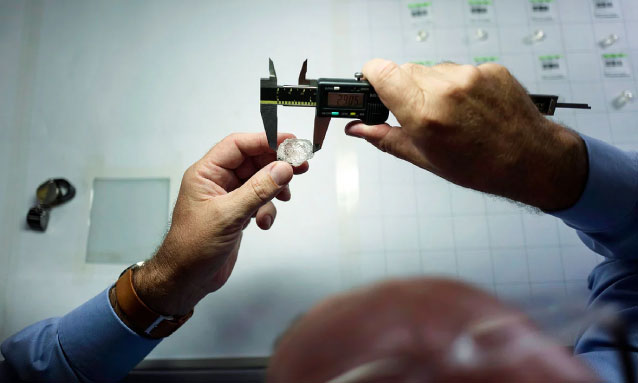
12 December 2024
Customers faced a dilemma: Buy unprofitable goods or lose future allocations. When shoppers choose to buy diamonds this holiday, it’s because they genuinely want to own the product and invest in its emotional and financial value. But higher up the supply chain, other considerations are going on.
Many De Beers clients had a dilemma at this month’s sight: Purchase unprofitable goods or reject them at the risk of losing future supply. The hesitancy came despite the miner’s price reduction of 10% to 15%, which still didn’t bring the goods in line with the rest of the market.
Minimum purchase
Some of these sightholders had not yet reached the annual minimum purchase of $15 million and three boxes of diamonds. Many had taken advantage of deferrals that De Beers had allowed in the second half of the year. Now, they faced losing their allocations next year if they failed to make up the numbers at this sight, the final one of 2024.
Yet, with polished sluggish and the secondary rough market weak, buying De Beers boxes would likely lead to losses, whether they resold the rough or manufactured it. In this context, insiders reported a strained atmosphere at the sight, which officially ran from Monday to Friday last week but was still not finished as of Wednesday, December 11. At the start of this week, reports were that clients were refusing a lot of goods — more than De Beers and the market expected, according to some of the sources.
There was, however, plenty of “political” buying — taking goods to satisfy De Beers.
“Everyone is playing with the ITO,” said one market source on Tuesday, referring to the “intention to offer,” a term for sightholders’ rough allocations.
“It is the only reason why people are buying.”
As of Wednesday, the value of the sight appeared to be increasing from what observers had expected earlier in the week. Market sources estimated proceeds of around $200 million, including sales to Botswana’s state-owned trader, Okavango Diamond Company (ODC). This is relatively high given market conditions. De Beers no longer reports sales value on a sight-by-sight basis and declined to comment to Rapaport News.
The indecision also delayed De Beers’ announcement of the 2025 ITOs, which sightholders had anticipated earlier this week on completion of the sight. Sightholders were now set to receive the details of their allocations on Friday at 12 p.m. Botswana time, De Beers told them on Wednesday.
Antiquated system
The situation exemplifies the complex and perhaps antiquated nature of the sight system. De Beers normally sells rough at a premium to the open market in return for offering consistent supply. Sightholders do not have a contractual obligation to buy, but they know that failure to do so carries consequences.
Furthermore, De Beers bundles similar goods into assortments, which customers can either accept or reject. Taking the better goods often entails acquiring unwanted inventory. Only in very bad markets does the miner let them refuse part of a box.
One of the mechanisms to smooth this situation is the buyback. This allows sightholders to identify a proportion of their purchases — usually 10% — that they would like to sell back to De Beers. The miner’s valuers assess the selected goods and return to the customer with an offer, which the sightholder can accept or reject. It enables them to remove the least profitable merchandise while still clocking up purchases that count toward future allocations.
De Beers often expands this capability when markets are bad. At this sight, it allowed 20% buybacks for 4-grainers (1 carat) and larger goods, sources said. This month, a lot of sightholders used the process for its main purpose, while a few did so to gain an extra couple of days to decide whether to buy, some of the sources said.
One more year?
De Beers plans to reduce the number of sightholders starting in 2026, CEO Al Cook said last month. For many of the companies that have limited their purchases this year, creeping up to the purchase threshold will only buy them 12 more months of what was once an envied status.
As the sight drew to a close, it appeared that a critical mass had decided that securing supply in 2025 was worth it. They don’t want to miss out if the market strengthens.
“People remember the old days, when being a sightholder was a license to make money,” said former rough broker Dudi Harari. “But it’s not anymore.”
Source: https://rapaport.com/analysis/sightholders-dither-on-de-beers-rough-diamonds-despite-price-cut/



